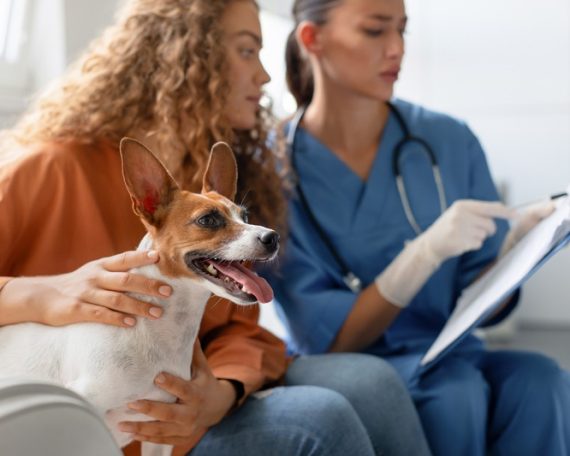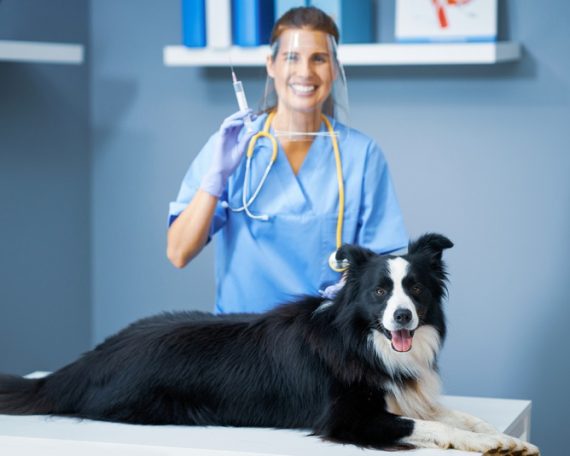How Often Should Your Pet Receive a Wellness Exam Alongside Urgent Care?
If you’re a pet parent, you know that keeping your furry friend healthy is a top priority. Like humans, pets benefit from regular check-ups to ensure they are in tip-top shape. But how often should you aim to get your pet’s wellness exam, particularly amidst unexpected visits for urgent care? In this extensive yet simple guide, we will break it down for you. We’ll discuss the balance between routine wellness exams and the unpredictable need for urgent care. So, keep reading to ensure your pet gets the best care possible to lead a happy and vibrant life.
Optimal Frequency for Pet Wellness Exams
How often should you bring your pet in for a wellness check? Most veterinarians agree that adult pets should have a wellness exam at least once a year. Senior pets or those with ongoing health issues need to be checked more frequently, every six months. Puppies and kittens, with their developing immune systems, often need a series of visits in their first year to get vaccinations and check their growth and development.
The Balance with Urgent Care
The Routine Check-Up
Regular wellness exams are your first line of defense against health issues. These check-ups are comprehensive—when your vet assesses your pet’s overall health, looks for early signs of disease, updates vaccinations, and recommends diet and exercise routines. Wellness exams typically cover:
-
Physical examination
-
Vaccinations updates
-
Parasite Prevention
-
Dental health assessment
-
Weight management
Between regular check-ups, it’s also essential to learn more about pet wellness to recognize early signs of sickness or distress in your pets. This can help you catch potential issues before they become big problems.
When Urgent Care Comes In
Unlike scheduled wellness exams, urgent care is usually unpredictable. This type of care is for injuries or illnesses that happen suddenly, like an accident, a sudden illness, or a flare-up of a chronic condition. For example, if you notice your pet is struggling to breathe, has had an injury, or is experiencing severe vomiting or diarrhea, these are cases where seeking urgent care is critical.
Having trusted emergency vet specialists at Northside Animal Clinic for these unpredictable situations is essential. They can provide immediate attention and advanced care when your pet needs it the most.
How Wellness Exams Complement Urgent Care
Wellness exams and urgent care services work hand in hand to keep your pet healthy. Regular wellness checks can prevent the need for urgent care visits by catching issues early on. Moreover, maintaining a good relationship with your vet helps ensure they know your pet’s medical history, which is invaluable during emergencies.
What to Expect in a Wellness Exam
Let’s dive into what a typical wellness exam entails:
-
Health history: Your vet will note any new developments and review past concerns.
-
Physical examination: This includes checking your pet’s body from nose to tail.
-
Vaccinations: Essential vaccines will be given based on your pet’s lifestyle and risks.
-
Parasite prevention: Your vet will recommend preventing fleas, ticks, heartworms, and intestinal parasites.
-
Lab work: Often, blood, urine, or fecal tests are conducted to detect problems not apparent from a physical exam.
-
Nutrition and weight management: Discuss your pet’s diet and weight to maintain optimal health.
-
Dental check: Oral health plays a significant role in overall wellness.
Following these steps, your vet can create a personalized care plan for your pet.
Identifying When Urgent Care is Needed
Sometimes, despite regular exams, your pet might require urgent care. Watch out for the following symptoms and behaviors that suggest your pet needs immediate medical attention:
-
Difficulty breathing or choking
-
Severe vomiting or diarrhea
-
Inability to urinate or defecate
-
Suspected poisoning
-
Severe injury or trauma
-
Sudden changes in behavior
-
Refusal to eat or drink for over 24 hours
Knowing these signs and having a plan will lessen the panic in an emergency. Remember, Jackson vets are just a call away when your pet needs immediate care.
How Lifestyle Impacts Vet Visits
Keep in mind that your pet’s lifestyle also plays a role in how often they should see the vet. Outdoor pets may require more frequent exams, as they’re at higher risk for injuries and parasites. Like service animals, working pets might also need regular evaluations to ensure they’re fit for their duties. Always discuss your pet’s needs with your vet to determine the right exam schedule.
Final Thoughts
Regular wellness exams are critical for your pet’s health and can prevent many urgent care visits. Aim for annual check-ups for adult pets, and more often for seniors or those with health issues. And, in the case of unexpected sickness or injury, knowing when and where to seek urgent care is equally important. Together, routine care and emergency preparedness will help you keep your beloved pet healthy and happy for years.











